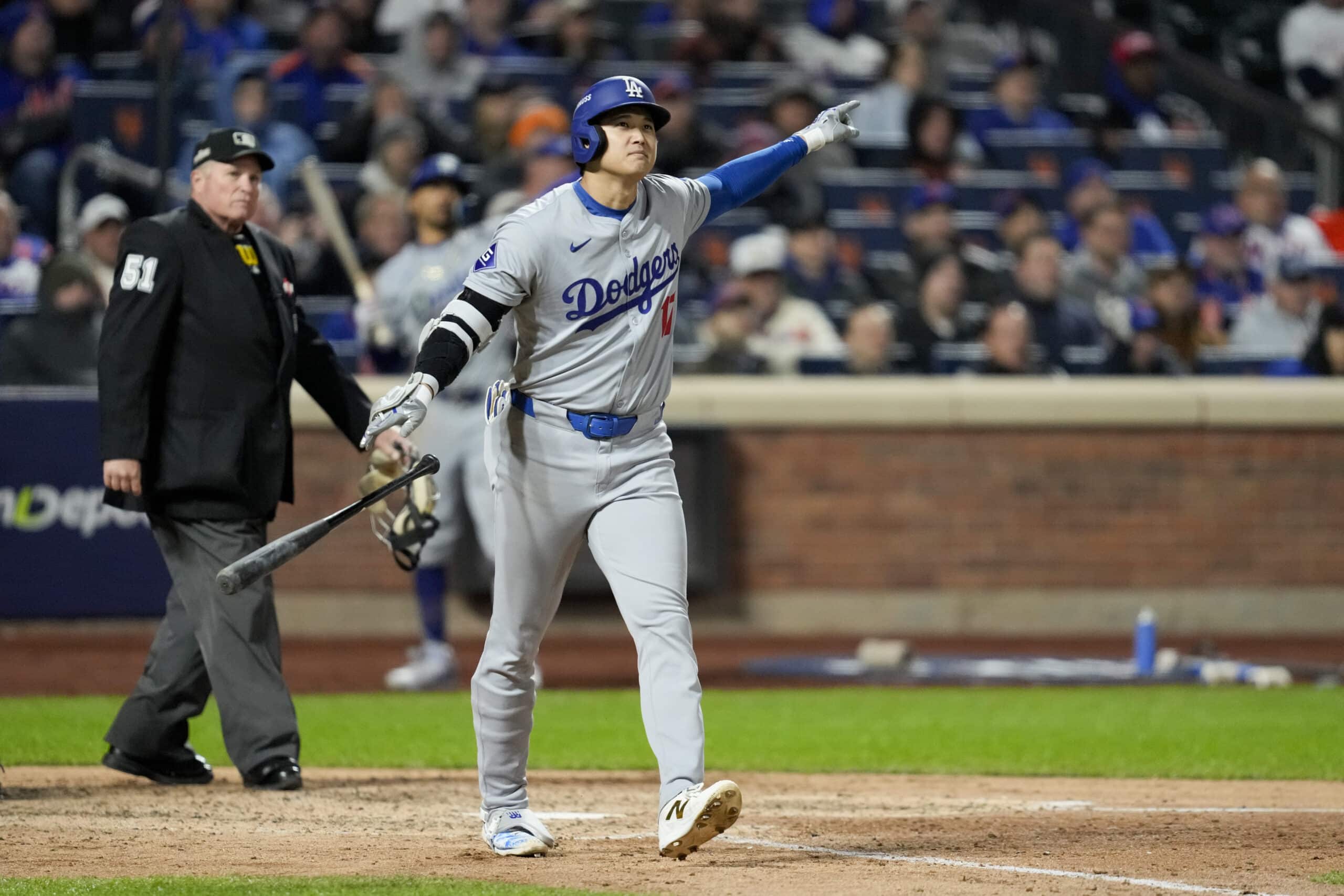The last 20 editions of the UEFA Champions League have been won by a club from England, Italy, Spain or Germany.
So it’s no surprise to see that UEFA’s country coefficients have the Premier League, Serie A, La Liga and the Bundesliga significantly ahead of every other league in Europe. But just as no single team within a nation plays like another, there are significant stylistic, tactical and philosophical differences between each competition too. And not always in the ways you might imagine.
Here then, are some of the key trends that have emerged from Europe’s top four leagues during the past five seasons — from Premier League set-piece prowess to the reluctance of Serie A goalkeepers to dash out of their penalty area.
Europe’s top four leagues continue to dominate its major club competition (Julian Finney – UEFA/UEFA via Getty Images)
Is La Liga a bit more no-nonsense than we thought?
Tactical evolutions are often prompted by innovative coaching ideas or outstanding playing talent, but tweaks to the laws of the game can also be a catalyst for change. The two-player offside rule or the introduction of the backpass law are historical examples of rule changes rewriting the patterns of the game.
The summer of 2019 saw a change in the goal-kick law, meaning the ball no longer had to leave the penalty area from the first pass. This has transformed the build-up approach among many teams in Europe, and sides increasingly focus on retaining possession with controlled sequences when playing out from the back.

GO DEEPER
Five years of the ‘new’ goal-kick law – this is how it has transformed football
However, that change has not been uniform across the leagues. Tracking the share of goal kicks that are played short (defined as a distance of 40 metres or less), La Liga’s positioning on this graph is something of a surprise.
While the stereotype of Spanish football is that it’s underpinned by short, progressive football, La Liga trails behind their European counterparts in terms of short passing sequences from their goalkeeper — and they have done so across each of the past five seasons.
In fact, the situation across the four leagues is actually surprisingly varied. The Premier League has embraced short passing from goal kicks steadily, La Liga experienced a major change after the law change but that evolution is levelling off, while the change in the Bundesliga has been somewhat erratic, and things have actually gone in the reverse direction in Serie A.

There are obvious wrinkles within the league; the wealth of technical ability throughout the expensively-assembled squads at the top of the pyramid means that the likes of Barcelona and Real Madrid are happy to build up close to their own goal, while Girona were also not-so-surprising outliers last season with their links to Pep Guardiola’s Manchester City.
Nevertheless, physical and hard-hitting football has emerged as an antidote to the possession-based style for which La Liga was once known, particularly since Getafe bulldozed their way to a fifth-placed finish in 2018-19, averaging just 40.7 per cent possession and completing 15,000 passes fewer than Barcelona over the course of the season.
The chart below shows how Getafe’s uncompromising approach under Jose Bordalas continues to sustain their eight-season streak in the top flight — finding 6ft 3in (192 cm) striker Juanmi Latasa with 36 goal kicks towards the left — while Cadiz and Athletic Bilbao also went long with over 80 per cent of their goal kicks last campaign.
Las Palmas aside, such figures reflect the widening financial gap in the Spanish top flight, and the fact that many teams — from Getafe to Mallorca to Osasuna — have found relative success by embracing a more direct style of play. Anyone who is missing a more rustic approach in the Premier League should perhaps give a lower-half La Liga game a try instead.

The different pattern observed in Italy speaks to the culture clash that exists between the “Giochisti” — coaches such as Roberto De Zerbi who focus on risky, attacking football — and the “Risultatisti” coaches such as Jose Mourinho or Massimiliano Allegri, whose pragmatic approach focuses on grinding out wins.
Playing out from the back is often at the heart of this debate, with De Zerbi (now plying his trade in Ligue 1 with Marseille) the most extreme advocate of a patient build-up in recent seasons. Among the top 20 highest share of goal kicks taken short across the top five leagues since 2019-20, there are two outliers among the recognised names of Bayern Munich, Real Madrid, Manchester City and Inter Milan.
The first team is De Zerbi’s 2020-21 Sassuolo, with 85 per cent of their goal kicks taken short being the 15th-highest share among the 390-strong list. The highest on the list? De Zerbi’s 2023-24 Brighton, who took 95 per cent of their goal kicks short.
Sub-plots exist within each league, but the contrasting approaches in Italy and Spain are particularly noteworthy on the macro level.
Another area in which the two leagues are more similar is officiating, with the data suggesting that La Liga and Serie A players are treading a much finer line with their disciplinary records than the rest.
Across the last six seasons, Spanish referees have dished out almost 10,000 yellow cards — over 3,500 more than in the Bundesliga — with many of those stacking up to make suspensions and dismissals.
In 2022-23 alone, La Liga saw more red cards (140) than in the last four Premier League seasons combined (139), while the five teams with the most red cards received since the start of the 2019-20 season — Getafe, Real Betis, Valencia, Sevilla and Celta Vigo — are all ever-presents in the Spanish top flight in that time, while three Italian sides (Hellas Verona, Roma and Milan) help to close out the top 10.
The table below illustrates the perfect storm driving this trend; a higher rate of fouls, and a group of referees — tolerating just 5.4 fouls per yellow card — notably quicker to dip into their pocket than the rest.

Drilling deeper into the numbers shows that dissent remains a big problem in La Liga, with 19 per cent of bookings coming after the referee has picked up on anything that shows a “clear lack of respect for the match officials”.
There have been plenty of infamous incidents, with interpretations of that rule stretched to their limits as Mateu Lahoz issued 18 cards throughout a tetchy Catalan derby in 2023, while a ludicrous ending to Elche vs Real Valladolid months later saw five yellows and three reds given in the space of 80 seconds as players protested a late foul.

The chart below emphasises the issue, but also suggests that last campaign’s crackdown on dissent brought about a palpable change in the Premier League, with early signs showing that the current season is on track to challenge those numbers.

Only three players were sent off for verbal encounters with the referee last season — Diogo Dalot at Anfield, Oli McBurnie at Tottenham, and Matheus Nunes against Brighton — but with 12 such dismissals in La Liga, it might be wise to keep mouths shut from here on in, whatever language you converse in.
Are the Bundesliga and Premier League more similar than ever before?
A stereotyped view of the German Bundesliga is that it remains the most transitional league in European football, but does that argument still carry any weight?
One simple method to measure this is to look at the volume of possessions (yes, plural) there are during an average game — essentially how many times the ball changes hands between the two teams.
More possessions generally signal a fast-paced, more frenetic game. By this measure, the Bundesliga has indeed remained the most transitional league in Europe with possessions hovering on either side of 200 per game since 2019-20. In comparison, Europe’s other three leading leagues have struggled to surpass 190 possessions per game. That might not sound like a huge difference, but that is 90 more exchanges of the ball in an average gameweek across the Bundesliga.
Given this energetic style, counter-attacking is a prominent part of the Bundesliga’s DNA, and the numbers support it. Tracking each league’s direct attacks — defined as possessions that start in a team’s half and result in either a shot or a touch inside the opposition penalty area within 15 seconds — over time, the Bundesliga has consistently led the way in the average game.
A pre-Xabi Alonso Bayer Leverkusen (2019-20 and 2021-22), a Marco Rose-led Borussia Monchengladbach (2019-20) and RB Leipzig (2022-present), and most iterations of Bayern Munich are responsible for driving this trend — but it is interesting to see a slowing down of such counter-attacking play in the Bundesliga last season with Alonso, Thomas Tuchel and Sebastian Hoeness as the lead protagonists.
It is particularly interesting to see each league take a dip in their metrics within the behind-closed-doors 2020-21 season. We all understand the reasons why, but the numbers back up the eye test in seeing a distinct loss in intensity across seasons played largely without fans.

Meanwhile, the Premier League is moving towards similar levels observed in Germany — recording its highest volume of direct attacks (5.6 per game) for five seasons in 2023-24.
While Guardiola’s Manchester City and Mikel Arteta’s Arsenal typically prefer control, more sides looked to embrace the chaos last season. Jurgen Klopp’s farewell campaign saw Liverpool return to his heavy-metal football approach, while the arrivals of Andoni Iraola (Bournemouth), Ange Postecoglou (Tottenham Hotspur), and Mauricio Pochettino (Chelsea) brought a similarly aggressive approach upon regaining possession.
Therefore, it is of little surprise to see that the Bundesliga and Premier League have the highest rate of injuries across Europe’s leagues, given the high-octane style of play we have grown accustomed to. A recent report saw Bundesliga clubs top 1,000 injuries in 2022-23 and 2023-24, with the Premier League the only other league to reach more than 900 injuries in that period.
The stylistic convergence between the Bundesliga and Premier League is clear, both visually and statistically. According to Transfermarkt, Premier League teams have made 59 permanent signings from the Bundesliga, which is more than Serie A (52) and La Liga (49), albeit fewer than France’s Ligue 1 (66).

GO DEEPER
Predicting the transfer market: Nunez, Haaland and league exchange rates
Transfers between leagues will always come with their own degree of risk, but the so-called ‘Bundesliga tax’ applied to those arriving from Germany may be fading with each season.
Defensive discipline still rules in Italy
Direct attacks have been trending upwards in Germany, Spain and England, but counter-attacking play is a rarer sight in Serie A.
The 2023-24 season saw just 4.5 direct attacks in the average game in Italy — 1.2 fewer per game than the Bundesliga (5.7 per game). Again, that might not sound a lot, but aggregated across a full league season that is hundreds more counter-attacks that Italian fans are missing out on.
Why is this? Well, it largely comes down to space, or the lack of it, given up by Serie A teams.
Lazio or Roma may fall into a mid-block out of possession to block the centre of the pitch, while Gian Piero Gasperini’s Atalanta imposes a man-marking approach to protect their back line, but defensive discipline is commonly the order of the day in Italy.
“Italians teams can still press forward, but they wait for you and they want to control the space,” Xabi Alonso said after Bayer Leverkusen’s Champions League victory over AC Milan this month.
“German teams normally jump (i.e. press high) and they want to put you under a lot of pressure. Sometimes it is difficult to build control but once you get out of this pressure you might have a good chance because the spaces are bigger.”
Alonso’s sentiments are supported by the numbers. Across every season since 2019-20, the Bundesliga has averaged the most ‘sweeper keeper’ actions per game — defined as a defensive action made outside the penalty area. By contrast, Serie A has consistently averaged the fewest.

Less space in behind means fewer opportunities to counter-attack, with Serie A’s style typically based on high technical and tactical quality with patient attacking rather than the gung-ho, breathless approaches taken elsewhere in Europe.
With Bundesliga teams often squeezing their higher defensive line, a goalkeeper must remain switched on to hoover up any balls played in behind. This is highlighted in the graphic below, with high-pressing VfL Bochum and relentless RB Leipzig seeing their goalkeepers intervene frequently in the middle third, while Manuel Neuer was doing… well, Manuel Neuer things for Bayern Munich.

By comparison, Serie A goalkeepers rarely venture outside their box — and when they do, they often hug the perimeter of the area. Note the lack of interventions of Inter Milan, Lazio, and Roma in particular last season.

Guardiola often cites Johan Cruyff as a major influence on his football philosophy, with Cruyff being a keen advocate for sweeper keepers in and out of possession during his managerial career at Ajax and Barcelona.
Guardiola’s influence on modern football has been profound, leaving a lasting impact on each club and league he’s been involved with. The only one of Europe’s top four leagues where he hasn’t managed? Serie A.
Perhaps it’s a coincidence, but goalkeeper behaviour in Italy is noticeably different from the leagues where Guardiola has coached.

Guardiola played in Serie A, but has not managed there yet (Grazia Neri/Getty Images
Are Premier League teams really the continent’s set-piece specialists?
Dead-ball situations have always been a crucial part of the game, but the rise of the set-piece coach has meant the lens has sharpened in recent seasons.
Arsenal’s Nicolas Jover, Aston Villa’s Austin MacPhee, and Chelsea’s Bernardo Cueva (formerly of Brentford) are among the most well-known specialists in the Premier League, and it is not uncommon to see them barking orders in the technical area when their side gears up to a set-piece routine.

GO DEEPER
Set-piece coaches, analysts… and chefs: Your club’s secret-weapon staff member
Last season’s 247 (non-penalty) set-piece Premier League goals was the most since 2016-17 (254), though some way off the all-time record of 319 in the inaugural 1992-93 season (albeit that was a 22-team division).
As a raw number, the Premier League is responsible for four of the top five set-piece totals across the four European leagues from 2019-20, but do set-piece goals take up a bigger part of the divisions’ goalscoring diet in England?
To answer this more accurately, we can look at the share of total goals scored via set pieces across each league. As the graphic below highlights, the Premier League has accounted for the highest percentage of goals in four of the last five seasons — with the Bundesliga pushing them the closest.
Again, note the subtle decrease across each league in the share of set-piece goals in the Covid-hit 2020-21 season. Whether it was a lack of intensity or a greater ability for defenders to communicate in empty stadiums, the numbers speak for themselves.

In truth, the difference between the leagues is rather minor, but breaking down the types of set-piece goals scored can provide further insight into a league’s patterns.
For example, the prevailing share of Premier League set-piece goals have come via corners, remaining fairly steady since 2020-21, with roughly two-thirds of the total tally coming via such means.

What is interesting is how this varies compared with the Bundesliga, whose share is notably lower in their goals scored from corners. By contrast, indirect free kicks take up a higher percentage of goals in Germany, hovering around one-third of the total set-piece goals scored since 2020-21.

With greater scope for choreographed routines with repeatable start locations, Premier League teams are seemingly focusing more of their energy on corner sequences compared with their German counterparts.

GO DEEPER
2022-23 felt like a golden season for corner routines – here are the numbers that prove it
Teams are growing wiser than simply sticking it in the mixer, and instead devising repeatable, complex patterns that would not be out of place in an NFL playbook.
As football’s search for marginal gains continues, let us know in the comments about any trends you’d like to see explored.
(Header design: Eamonn Dalton; photos: Getty Images)





